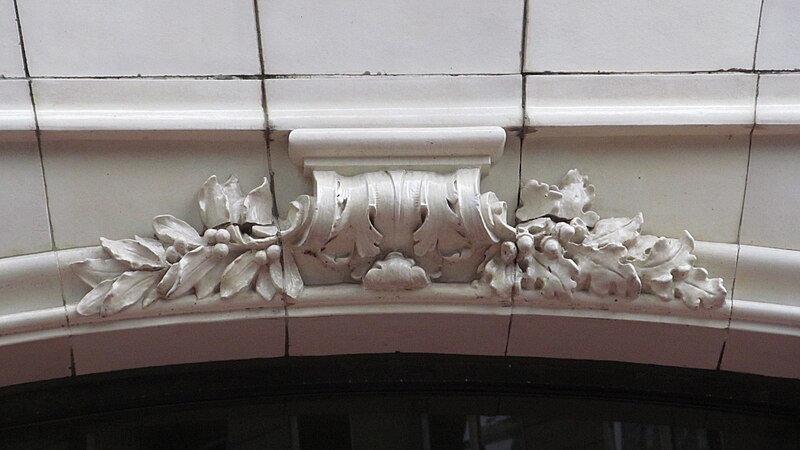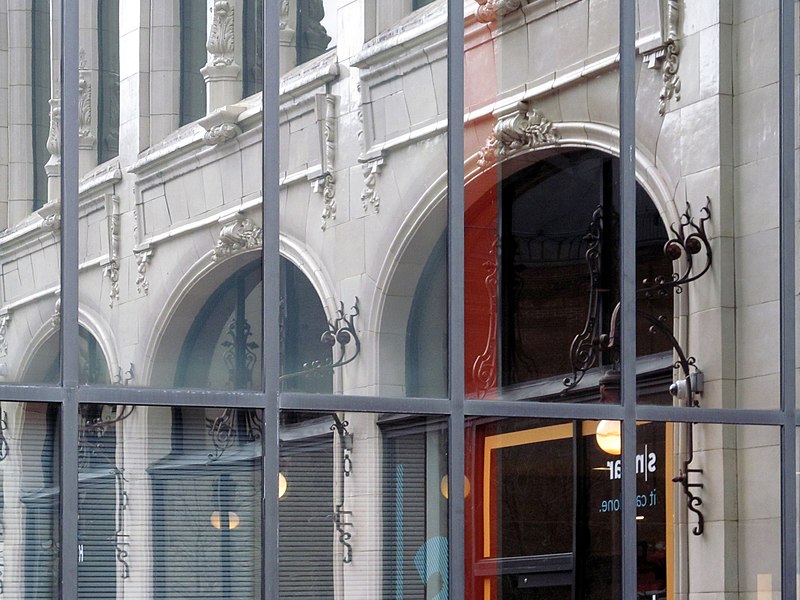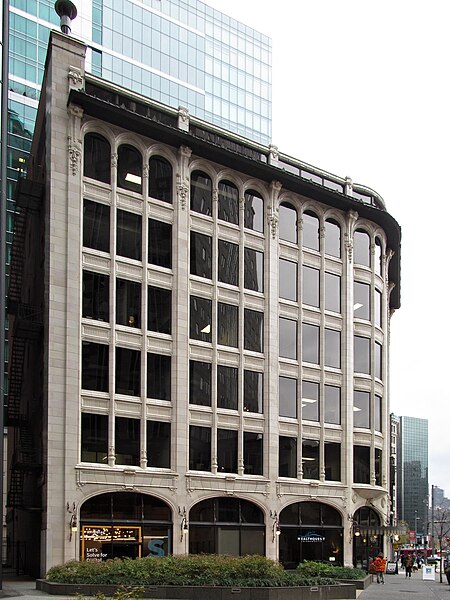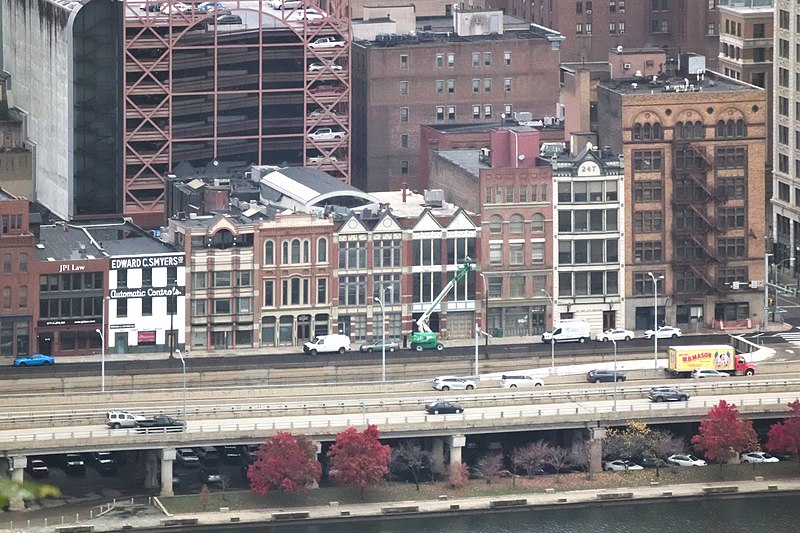
Now known as Four Smithfield Street, this early skyscraper was designed by James T. Steen and opened in 1902.


One of the little neighborhood libraries designed by Alden & Harlow, this one has a prime location on Grandview Avenue, making it possibly the library with the best view in the world.

Now called just 606 Liberty Avenue, this was once a high-class department store. The odd-shaped building was designed by MacClure & Spahr, who gave us many distinguished buildings downtown. The odd shape was forced on this one by the oblique angle of the intersection of Liberty and Oliver Avenues. That last block of Oliver Avenue was later filled in to make PNC Plaza, but this building memorializes the intersection that used to be.

The front on both streets is covered—perhaps the appropriate word is festooned—with terra-cotta decorations. The style is a kind of fantasy Jacobean Renaissance, with wide arches coming to a very shallow not-quite point. Old James I only wished he could have buildings like this in his realm.







The arches reflected in Two PNC Plaza next door.


Something like a Pittsburgh foursquare stretched into a Renaissance palace, this house prefers simple dignity to ostentatious ornament.


The little human-sized buildings along Fort Pitt Boulevard originally faced the Monongahela Wharf, where the steamboats lined up.


Gilding the capitals of your Ionic porch columns is a subtle way to tell the world, “I have more money than I know what to do with.” Note the half-round extrusion in the shadows on the right-hand side.


Two Second Empire rowhouses whose upper floors are fairly well preserved. The one on the right has had some adventures on the ground floor, possibly including a storefront at some point. Note the wooden shingles on the house on the left.
One response